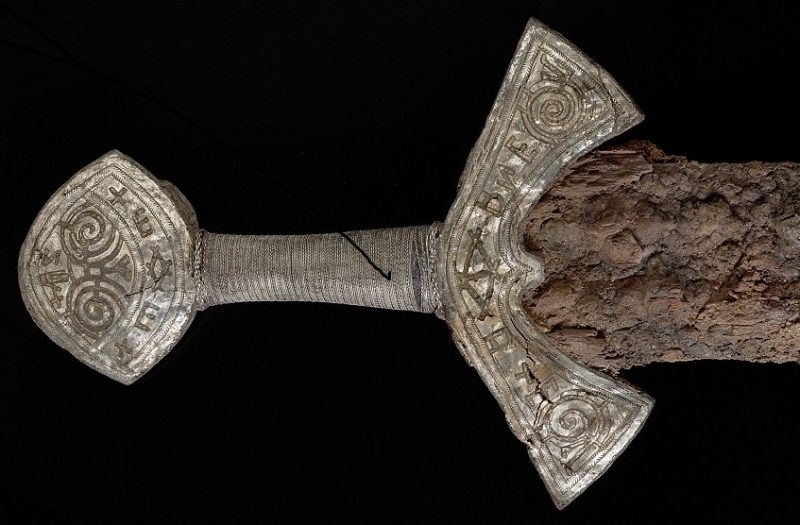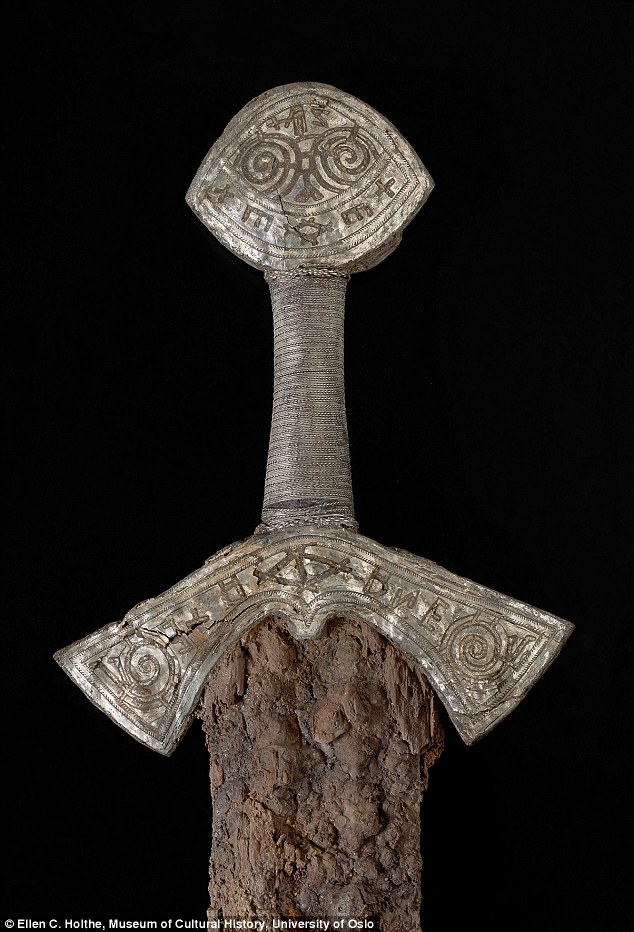Inevitably, when one sees an old, tried and trusty sword, particularly a well-crafted one, many romantic ideas spring to mind. One considers the knights of old, fighting duels in defense of a lady; one thinks of Saint George slaying dragons with such a weapon. King Arthur, that most romantic of heroes, was said to have gained his throne by being the only person able to release his sword Excalibur from the stone that was holding it fast. One thinks too of the sword of Damocles, hanging over the unfortunate man’s head as a symbol of the eternal threat to the security of human life. One could imagine pirates fighting battles on rolling decks, and of swords used in wars throughout ages of fighting, hand-to-hand or on horseback – desperate life-or-death battles. Certainly the sword is a most romantic item.
Imagine therefore the excitement experienced by those involved in the discovery of a beautifully-wrought, 11th century Viking sword. In 2011 archaeologists were excavating in the Setesdal Valley in Southern Norway. They had located a fairly ordinary looking coffin in the Langeid cemetery, which was soon found to be more interesting than it had it seemed at first glance. The coffin had post holes at each corner, which meant that it had at some stage had a roof; thereby denoting that the occupant had been someone of high standing. When the coffin itself was opened, there was disappointment when little of real interest or value, other than two rather damaged coins, was found. One coin was identified as having come from North-western Europe, probably Germany, while the other was an Anglo-Saxon coin which had been minted under Ethelred II , who had ruled England from around 978 AD to 1016 AD.
As the excavation work continued, two more very interesting artefacts were located. Neatly laid along one side of the coffin was a typical Viking battle axe and on the other side, an impressive decorative sword of almost a metre in length. The sword blade was quite heavily rusted but the hilt was reasonably well preserved. The hilt had been wrought and decorated in silver and gold with added silver-thread decorations, and finished off with a thread of copper alloy. The whole was decorated with spirals, letters and various figures. It is thought that the letters were intended as a message, but as yet that has not been deciphered. Small bits of leather and slivers of wood were found adhered to the blade which, it seems, were the remains of what was once the pouch in which this sword was held while the owner was mounted – usually for purposes of war. This lovely sword probably belonged to someone of importance and would most likely have been used in battle.
The Vikings, coming from the Scandinavian lands, launched frequent and aggressive forays into the rest of Europe, notably England, where the unprotected and very richly-endowed monasteries were easy and lucrative prey for them. From early times waves of Viking raiders crossed the seas dividing them from England, ravaging the countryside and returning to their homelands loaded with plundered loot. Towards the end of the 10th Century, Viking raids became organized by royal leaders on a much larger scale.
At this time, extortion became the main aim of these larger attacks, and huge amounts of silver were demanded from the English, who in essence were forced to pay the Vikings to go back to their own lands. Swords, however, were still highly sought after articles, being superior in strength and quality to those from Scandinavia. It is thus not unusual today to find artefacts from many parts of Europe in Scandinavian excavations, which would explain the finds from the Langeid cemetery.
At the beginning of the 11th century, Canute was involved in many of the raids into England, first in support of his father King Svein of Denmark and, after the death of his father, on his own account. Canute brought to England a force of thousands of Viking warriors, reported (according to the chronicler Sven Aggeses) to be armed with swords and battle-axes similar to those found in the Langeid Cemetery. Furthermore, a very large number of these warriors were said to be strong, young and of the royal or noble upper classes of Scandinavian society. Rune stones found in the vicinity of the cemetery also tell of many men from the region which went to fight in support of Canute in the 1013–1014 campaign. Canute was finally crowned King of England in 1016 and soon began sending his warriors back home – after having levied huge taxes on the English people in order to pay his soldiers – so perhaps this sword came home with its owner.
One can seldom be totally sure about the history of an archaeological find of this nature, but considering the evidence it would seem likely that our unknown warrior went to war in the early 11th Century in support of Canute and after the successful outcome of the English campaign, came home (or his body was brought home) to finally be buried with his trusty sword – in a style due his consequence.
All images @Ellen C Holthe


